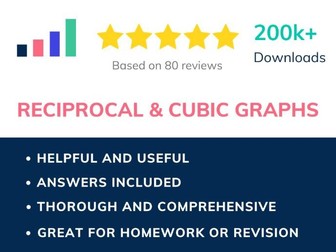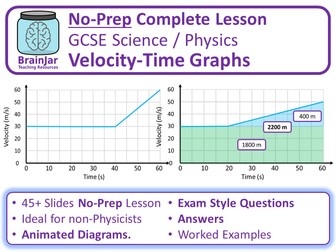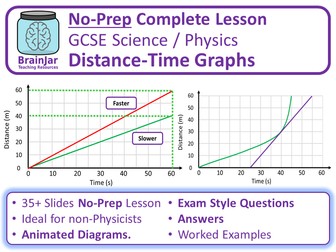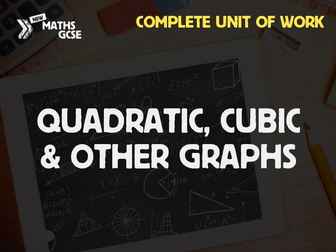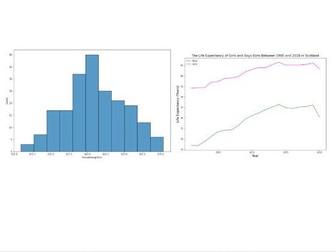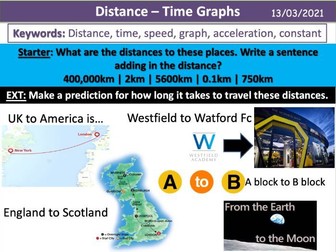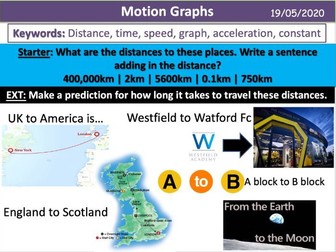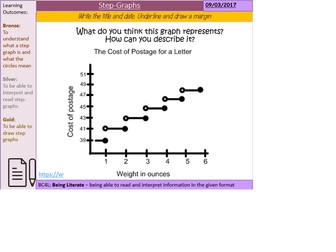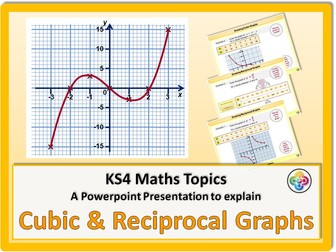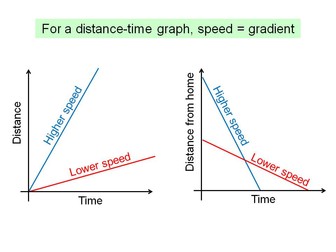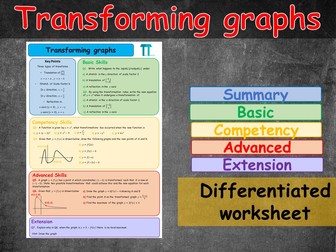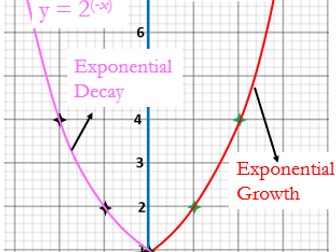
Transforming Other Graphs
Carefully Animated lesson on how to transforming other graphs
Excellent animation to bring life in delivering maths concepts, accessible to all.
This presentation will boost your confidence and enthusiasm in maths.
Very useful for audio visual learners.

Gradient of a line and other graphs
Powerpoint on finding the gradient between two points and of a line. It also covers parallel and perpendicular lines, the midpoint of two points, simple quadratic graphs and the intersection of two lines.
Sale

Drawing other standard graphs
This lesson is a follow on from the lessons involving drawing the quadratic curve.
The lesson consists of a couple of worked examples on drawing standard curves, followed by information about some standard graphs and their shape.
The lesson also has an worksheet for students to tackle in class or as a piece of homework.

Reciprocal and cubic graphs
This well thought out worksheet has been structured to increase in difficulty gradually, beginning with scaffolded intro examples and building up to more challenging questions that get them thinking.
Under the hood
Plotting reciprocal graphs using a table
Plotting cubic graphs using a table
Thorough, comprehensive, and carefully designed to boost confidence and grades.
Answers included
Not completely convinced? Download a free preview of the sheet here.
https://www.tes.com/teaching-resource/resource-12411968

Velocity Time Graphs
Complete No-Prep lesson with exam questions, tasks and answers on velocity time graphs for AQA GCSE (9-1) Science / Physics. This lesson covers part of AQA GCSE Physics 4.5.6.1.5 / Combined Science 6.5.4.1.5.
As a Secondary Science teacher, Deputy Headteacher, writer and examiner for many years I make high quality no-prep lessons so busy teachers can teach outstanding lessons without spending hours planning. This high quality lesson includes explanations, different types of in-lesson assessment (all with answers) and unique exam questions.
My lessons are ideal for non-Physicists - as a Biologist who retrained as a Physics teacher I know how to take learners on a journey that builds up their understanding step by step, while still going into a lot of depth. The preview video shows a representative sample of slides from the resource so that you get a good idea of what it includes before you buy.
What’s Included:
• Teaching notes
• Starter / Do Now Activity
• Explanation slides in “chunked” sections with animated diagrams.
• Worked examples of calculations / questions.
• Multiple questions in different question styles and difficulties - no need for worksheets. Each “chunked” explanation section typically includes a set of “learning check / quick questions” followed by a set of in-depth questions on the learning from that “chunk” of the lesson. All questions have answers.
• Exam-style questions on the whole lesson at the end of the lesson- these are unique, based on real exam questions but not just copied from exam boards.
• Answers for all questions
• All easily editable to adapt to your teaching or to use in existing lessons.
• Slightly humorous, at points, if you like that sort of thing.
The lesson was written for AQA GCSE Science / Physics but is very likely to be applicable to other exam specifications.
Please leave a rating / review and all other feedback gratefully received!
undefined

Distance-Time Graphs
Complete No-Prep lesson with exam questions, tasks and answers on Distance-Time Graphs for AQA GCSE (9-1) Science / Physics. This lesson covers all of AQA GCSE Physics 4.5.6.1.4 / Combined Science 6.5.4.1.4.
As a Secondary Science teacher, Deputy Headteacher, writer and examiner for many years I make high quality no-prep lessons so busy teachers can teach outstanding lessons without spending hours planning. This high quality lesson includes explanations, different types of in-lesson assessment (all with answers) and unique exam questions.
My lessons are ideal for non-Physicists - as a Biologist who retrained as a Physics teacher I know how to take learners on a journey that builds up their understanding step by step, while still going into a lot of depth. The preview video shows a representative sample of slides from the resource so that you get a good idea of what it includes before you buy.
What’s Included:
• Teaching notes
• Starter / Do Now Activity
• Explanation slides in “chunked” sections with animated diagrams.
• Worked examples of calculations / questions.
• Multiple questions in different question styles and difficulties - no need for worksheets. Each “chunked” explanation section typically includes a set of “learning check / quick questions” followed by a set of in-depth questions on the learning from that “chunk” of the lesson. All questions have answers.
• Exam-style questions on the whole lesson at the end of the lesson- these are unique, based on real exam questions but not just copied from exam boards.
• Answers for all questions
• All easily editable to adapt to your teaching or to use in existing lessons.
• Slightly humorous, at points, if you like that sort of thing.
The lesson was written for AQA GCSE Science / Physics but is very likely to be applicable to other exam specifications.
Please leave a rating / review and all other feedback gratefully received!

Quadratic, Cubic & Other Graphs - Complete Unit of Work
This unit contains full lesson plans and resources to teach the ‘Quadratic, Cubic & Other Graphs’ unit and is suitable for GCSE Higher Tier students. The lessons are designed for the new GCSE specification.
The pack contains 6 detailed lesson plans, each accompanied with student worksheets and other classroom resources that you can use, including suggested support and extension activities for each lesson, as well as a homework activity to accompany the unit and an end-of-unit assessment.
The lessons contained are:
• Types of Graph
• Plotting Quadratic Graphs
• Using Quadratic Graphs
• Cubic Graphs
• Reciprocal Graphs
• Circle Graphs

Data Science - Creating other graphs in Python
Free lesson resources for teaching Data Science NPA (National Progress Award) Levels 4,5 and 6.
This lessons covers how to create histograms, line graphs and scatter plots in Python using the seaborn package.
Lesson content,
Powerpoint presentation: ‘Creating other Charts in Python’
Jupyter notebooks:
‘creating_other_charts.ipynb’ (for learners)
‘creating_other_charts_answers.ipynb’ (for teachers)
The Jupyter notebook for teachers contains answers to the tasks set for learners.
Planning document with learning intentions and success criteria
For more information on the Data Science NPA, please see teachdata.science
If you have any questions or feedback on this lesson, please email lessons@effini.com
This lesson has been created by effini in partnership with Data Education in Schools, The Data Lab and Data Skills for Work, with funding from the Scottish Government.
© 2022. This work is licensed under a CC BY-NC-SA 4.0 license.

Distance - Time Graphs (KS3)
KS3 new for the AQA Approved Activate 1 unit ‘Forces’.
Full lesson ready to use straight ‘out of the box’.
Though designed for teachers to deliver (specialist and non-specialists), the lessons are structured in an intuitive way for students to navigate for independent/ remote learning/ homework covering missed content/recap
Similar structure to my other power points following the input - activity - review phasing
plenary sections for progress checking
Clear learning objectives and outcomes
Modern and engaging layout
Little adaptation needed
Covers an hour lesson of content matched to the specification
52 ppt slides
Please give constructive feedback :D

Motion graphs
KS3 new for the Activate resource “Motion and Pressure” module
Full lesson ready to use straight ‘out of the box’.
Similar structure to my other power points following the input - activity - review phasing
plenary sections for progress checking
Clear learning objectives and outcomes
Modern and engaging layout
Little adaptation needed
Covers an hour lesson of content matched to the specification
49 ppt slides
Please give constructive feedback :D

Reciprocal & Exponential Graphs Activity Pack
This pack contains three activities designed to support GCSE students in plotting and interpreting reciprocal and exponential graphs.
It includes:
1. Drawing & Understanding Reciprocal & Exponential Graphs
This contains worksheets where students must work out the co-ordinates for a series of exponential and reciprocal functions and plot their associated graphs, in order to see the shape made. Following on from this is a set of questions designed to probe understanding and get students thinking about where the functions are defined and the co-ordinates they will pass through.
2. Asymptotes
To help students understand the shape of reciprocal and exponential graphs, this set of PPT slides is designed to give students a chance to understand why and where asymptotes will occur.
3. Graphs Match
This activity is designed to be used when students have studied a range of graphs, including reciprocal and exponential functions. It contains graphs of quadratic, cubic, circle, linear, reciprocal and exponential graphs that students must match to their equations.

Step Graphs
I struggled to find anything useful on the newer topic of Step Graphs for the new maths GCSE exam when I wanted to teach my year 9s so I put a few things together.
There are printable worksheets throughout ("hidden") the PowerPoint for students to work from reading step graphs or producing their own.
Some of the answers are provided too - but there are places for discussion especially when it comes to adding tax (whole price or individually split up).

Cubic and Reciprocal Graphs KS4
A Powerpoint to explain Cubic and Reciprocal Graphs. This powerpoint has 23 slides (Including one title and one end slide). Designed for KS4 / GCSE.
Topics covered are:
Cubic Graphs
Shape of Cubic Graphs
Drawing Cubic Graphs
Reciprocal Graphs
Shape of Reciprocal Graphs
Drawing Reciprocal Graphs

Quadratic, Cubic, Reciprocal, Exponential Graphs!
When planning lessons with graphs, I find it so difficult to find differentiated questions with simple worksheets and answers included! So I have made this, and hopefully it will help some of you too!
I used this with my middle ability year 10, and it was the first time they had seen all of these graphs, apart from a quadratic.
All lessons include:
5 a day starter,
Learning objectives and progress tick slide,
Fully animated and simple examples,
Worksheets ready to print (so no time wasted drawing axes),
Answers for each graph!
Lesson 1:
Quadratic graphs!
Recaps how to generate coordinates from an equation, examples of plotting graphs, differentiated questions with exam style questions to extend.
Lesson 2:
Cubic & Reciprocal graphs!
Examples of how to generate and plot each graph. Worksheets WITH answers on each. Slides to print off as worksheets at the end of the presentation.
Lesson 3:
Exponential graphs!
Examples of how to generate coordinates and plot graph, includes worksheet at the end of the presentation, answers of course and exam style questions to extend!
Please feel free to edit these resources for your needs. If you like them, or think there is anything else I can do to improve them, rate or comment!
Thanks =]

Distance-time graphs introduction
The first of two complete lessons on distance-time graphs that assumes pupils have done speed calculations before. Examples and activities on calculating speed from a distance-graph and a matching activity adapted from the Mathematics Assessment Project. Printable worksheets and answers included. Please review it if you download as any feedback is appreciated!

Transforming graphs
A differentiated worksheet/revision sheet resource to teach students how to transform graphs. Designed for the new A-level specification.
If the resource is useful to you I’d appreciate any feedback.
Want the complete set of worksheets covering Algebra and functions: Algebra and functions
Want more free resources check out My Shop

Velocity-time graphs
This well thought out booklet has been structured to increase in difficulty gradually, beginning with scaffolded intro examples and building up to more challenging questions that get them thinking.
Under the hood
Interpreting constant acceleration velocity-time graphs - i.e., using gradient to find the acceleration, finding the distance by calculating the area underneath
Estimating the acceleration from a curved velocity-time graph
Calculating the average acceleration between two points
Using trapeziums to estimate the distance from a curved velocity-time graph
Thorough, comprehensive, and carefully designed to boost confidence and grades.
Answers included
Not completely convinced? Download a free preview of the sheet here.
https://www.tes.com/teaching-resource/resource-12482195
Bundle

Graphs
Carefully Animated lesson on how to draw various graphs.
Excellent animation to bring life in delivering maths concepts, accessible to all. This presentation will boost your confidence and enthusiasm in maths.



